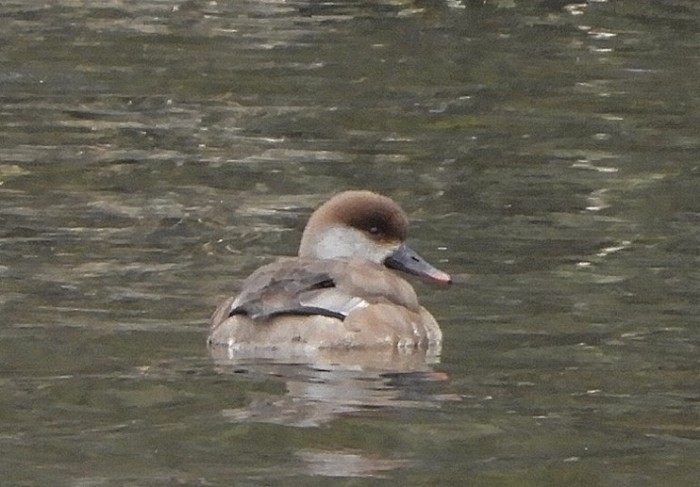A relentless and blustery south-westerly airstream continued throughout the period, providing conditions conducive to spring migration for many species. Few would dispute that the Nene Valley was the place to be this week and, undoubtedly, the highlight for many was a hugely impressive flock of Black-tailed Godwits which descended on Summer Leys, while a new Ring-necked Duck was found at Ringstead. And then there were the new summer visitors …

On the face of it, some of these dates may seem to be a little early but none of them is anywhere near record-breaking – the earliest Yellow Wagtail, for instance, was on 9th March 2014 and the other three are all between eight and ten days later than the previous record holders. The week also produced further singles of Garganey at Summer Leys on 23rd, Yellow Wagtail near Lamport on 21st and Swallow at Thrapston GP’s Titchmarsh LNR on 24th.
Now, following due systematic process, there was little change to the week’s wildfowl, which saw the Pink-footed Goose remaining throughout with Greylags at Wicksteed Park, Kettering and the female Ruddy Shelduck still at Winwick Pools on 20th.

Similarly lingering was the female Red-crested Pochard at Summer Leys until at least 23rd, while the long-staying female Ring-necked Duck again chose to alternate between Hollowell and Ravensthorpe Reservoirs and was still present at the latter site on the last day of the week. Meanwhile, in the east of the county, another female Ring-necked Duck was discovered at Ringstead GP on 23rd, this bird highly likely to be the individual seen at nearby Thrapston GP on 27th-28th January – its whereabouts during the intervening period remaining unknown.

With no reports this week, the Ravensthorpe & Hollowell female Greater Scaup appears to have upped and gone but the first-winter drake saw another full week out at Billing GP.

A little further down the Nene Valley, a riot of Black-tailed Godwits caused a bit of a stir, ultimately proving a popular draw, at Summer Leys on 21st and 22nd. An exceptional flock of 163 dropped in on the Scrape there, mid-morning, on the first of these two dates and was still present at first light the following day. The flock then fragmented with groups moving off until the last had departed by very early morning – only to be replaced, almost three hours later, by the arrival of a new flock of up to thirty birds. While Pitsford Res cobbled together a mere three on 21st, it still holds the record for producing the most birds in one day – in excess of three hundred passing through on 28th April 2017.

With numbers of winter gulls fast dwindling, local scarcities were few and far between. Most notable was an adult Mediterranean Gull appearing intermittently at Summer Leys on 19th-20th, followed by a first-summer there, albeit only briefly, on 22nd.

The only Caspian Gulls making an appearance this week were a first-winter and second-winter at Daventry CP on 18th and a first-winter paying a short visit to Titchmarsh LNR’s Aldwincle Lake on 22nd.
On the raptor front, single Ospreys seen in two site-sensitive areas in the north of the county on 21st were not completely unexpected but a White-tailed Eagle over Hollowell and Ravensthorpe Reservoirs on 19th was a different kettle of fish entirely. This bird was radio-tagged ‘G547’, a second-winter female from the Isle of Wight reintroduction scheme, which has spent most of the last year in northern Scotland and, through tracking, is now said to be heading purposefully south. Before hitting Hollowell it had flown more than 217 km from the Yorkshire Dales during the day, choosing to roost at Ravensthorpe, where it was still present early the following morning.

It’s astonishing how these flying barn doors routinely slip through the county without being seen, raising the obvious question … what else are we missing?
And talking of things missing, there appears to have been a big clear out of Stonechats this week with the only birds seen being two at Priors Hall, Corby on 19th.

Hot on the heels of the first spring wave last week, Northern Wheatears were on the up with five together at Willowbrook Industrial Estate, Corby on 23rd, twos at Polebrook AF on 19th and in the Brampton Valley on 20th, plus singles at the latter locality on 21st, 22nd and 24th and one at Hinton AF on 18th.





























